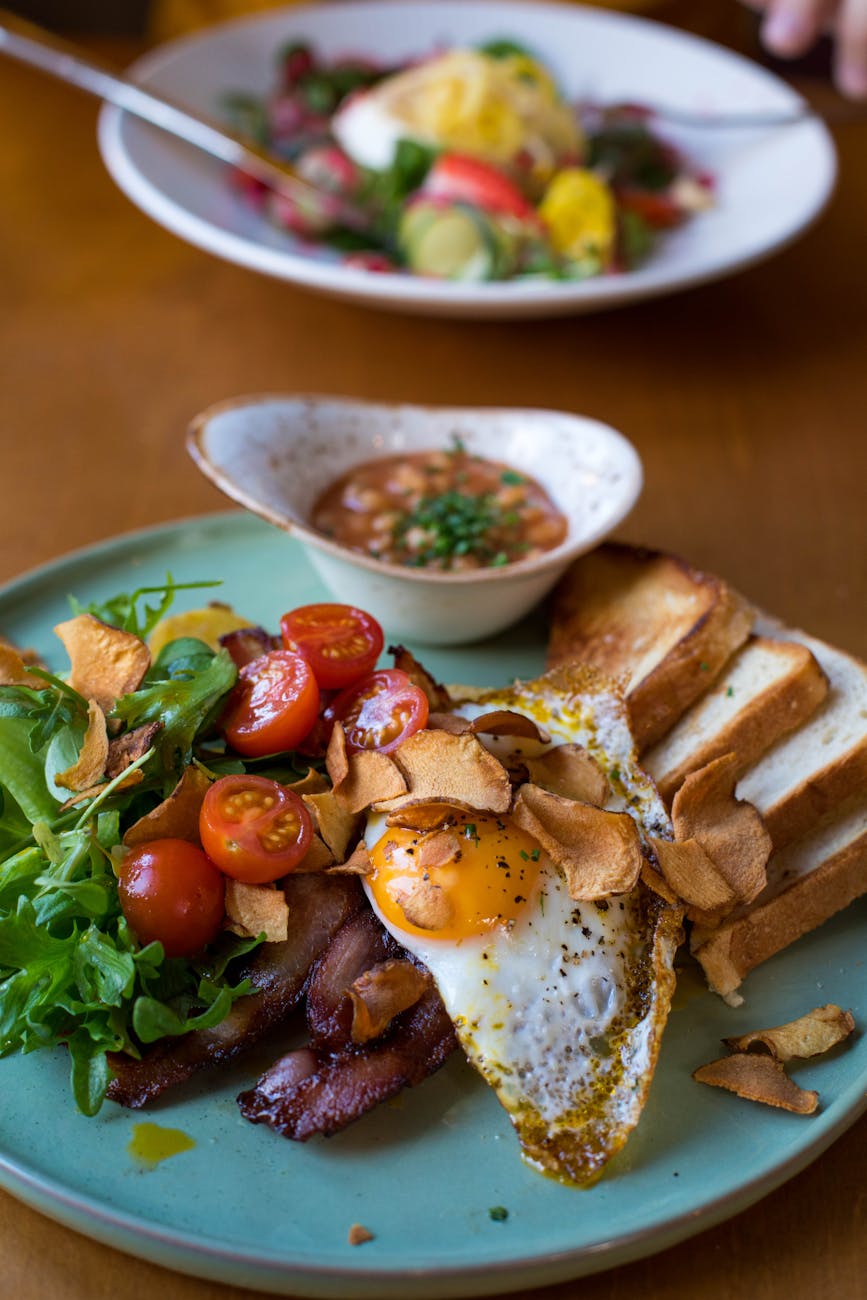Spanish breakfast
One of the more surprising things that I learned during my study abroad experience in Spain was that breakfast was not considered a terribly important meal. Americans are ingrained with the idea that breakfast is “the most important meal of the day.” As the Spanish family I was living with put it – we like “un desayuno fuerte” (a “strong breakfast”.) However, the Spanish teenagers in the house might grab a couple of biscuits or a small cup of yogurt before leaving the house in the morning – if anything at all.
Now, this wasn’t entirely true of the adults. Many of them did eat breakfast at home, and lots of them also purchased breakfast on the go from one of the many cafes on their route to the office. But a lot of Spanish young adults and teens do skip breakfast.
This may be partly due to the fact that Spanish is a very late culture, particularly amongst youth. It’s not uncommon to stay out until 2 or 4 in the morning – and possibly grab shawarma on the way back home. So the younger generation may just not be as hungry when they get up in the morning.

It took some getting used to. I left the house for school a few times during the first week after rummaging around in the refrigerator and kitchen cabinets and coming up empty-handed. My stomach was rumbling during the first period, and I was finding it hard to concentrate on what the instructor was saying. I had to dash out to a nearby cafe to grab something to eat before my second class began. Before long, I learned to hit the grocery store to stock my own breakfast items, so I wouldn’t be starving in the mornings. During this time, I learned a lot of Spanish breakfast recipes that were actually pretty easy and quick to make. Since I didn’t have a lot of time before my first class, I needed a quick breakfast. Here are some of my favorite Spanish breakfast ideas that I learned:
6 Spanish breakfasts you can make yourself.
- Tostada con tomate, aceite, y jamón
- Tortilla de patatas
- Spanish breakfast casserole with eggs and bacon
- Bocadillo de huevos revueltos
- Torrijas (Spanish bread pudding)
- Ensaïmada Mallorquina
Other times, I just did not have enough time to make breakfast before school. It wasn’t a huge deal to me, because Spanish cafes have amazing breakfast items. There are some amazing Spanish breakfasts at the local restaurants

Frequently asked questions about breakfast in Spain:
What time do Spanish people eat breakfast?
A typical Spanish breakfast time is as early as 7:00 am, but may be as late as 8:30 am. This might seem late to some Americans, but remember: Spanish people often take a siesta (nap) in the middle of the day. This means that they stay up later in the evenings and thus also sleep in. This is especially true on weekends (after a late night socializing) when most Spaniards have breakfast between 8:30 and 10:30 in the morning. Small cafes in Spain usually serve breakfast until 11:00 and chain restaurants may serve breakfast until 1:00 p.m.
Do people in Spain eat eggs for breakfast?
Unlike Americans, Spanish people rarely eat eggs for breakfast. When they do, it’s usually in the form of tortilla española (an omelet-like dish made with eggs, potatoes, and occasionally onions, and often served at room temperature). Instead, Spaniards will often eat toast with tomato or cheese, churros, pastries, or the like.
How do Spanish people take their coffee?
Espresso is by far the most popular coffee in Spain.
Common ways to take coffee in Spain:
- “Café solo” is a small cup of espresso, with little or no milk. It is strong and black.
- “Café cortado” is a small cup of espresso, and just a small splash of milk.
- “Café con leche” is equal parts espresso and milk.
- “Café con Hielo” is iced coffee – typically provided in two cups (one of black espresso, one of ice) for you to mix yourself.
- “Café Americano” is brewed with more water, so it is a little bit milder in taste.
- “Descafeinado” is decaf.
In most cafes in Spain, the barista will pour you a cup of espresso and add the amount of milk that you specify (if any) – they will not typically add sugar on your behalf. Rather, you can pick up packets of sugar to add to the coffee on your own.
Note: the “torrefacto” method of preserving roasted coffee beans (adding a predetermined quantity of sugar during roasting so as to glaze the beans) may make Spanish coffee seem more bitter than Americans are accustomed to. Torrefacto style coffee is not only popular in Spain, but also in France, Paraguay, Portugal, Mexico, Costa Rica, Uruguay and Argentina.

How do you order coffee in Spanish?
To order coffee from a cafe in Spain, you would typically say one of the following:
- Un café, por favor. (A coffee, please)
- ¿Me das un café, por favor? (Would you get me a coffee, please? -informal)
- ¿Me da un café, por favor? (Would you get me a coffee, please? -formal)
- Voy a querer un ___ (I would like to order ___)
- Pónme un cafe, por favor (Get me a coffee, please – literally “put me a coffee”)

You may enjoy:
How to offer condolences in Spanish
Most beautiful Spanish words
Good luck in Spanish
